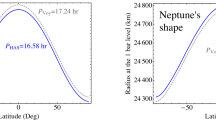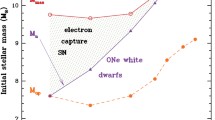Abstract
The stellar mass-luminosity relation (MLR) is one of the most famous empirical “laws”, discovered in the beginning of the 20th century. MLR is still used to estimate stellar masses for nearby stars, particularly for those that are not binary systems, hence the mass cannot be derived directly from the observations. It’s well known that the MLR has a statistical dispersion which cannot be explained exclusively due to the observational errors in luminosity (or mass). It is an intrinsic dispersion caused by the differences in age and chemical composition from star to star. In this work we discuss the impact of age and metallicity on the MLR. Using the recent data on mass, luminosity, metallicity, and age for 26 FGK stars (all members of binary systems, with observational mass-errors ≤3 %), including the Sun, we derive the MLR taking into account, separately, mass-luminosity, mass-luminosity-metallicity, and mass-luminosity-metallicity-age. Our results show that the inclusion of age and metallicity in the MLR, for FGK stars, improves the individual mass estimation by 5 % to 15 %.




Similar content being viewed by others
Notes
Note that the correlation coefficient is a non-linear parameter ranging from −1 to 1. That is, the difference between 0.8 and 0.9 is much higher than the difference between 0.1 and 0.2, for instance.
References
Bonfils, X., Delfosse, X., Udry, S., Santos, N.C., Forveille, T., Ségransan, D.: Astron. Astrophys. 442, 635 (2005)
Cester, B., Ferluga, S., Boehm, C.: Astrophys. Space Sci. 96, 125 (1983). doi:10.1007/BF00661946
Cox, J.P., Giuli, R.T.: Principles of Stellar Structure: Volume 2. Applications to Stars. Gordon and Breach, New York (1968)
Eddington, A.S.: Mon. Not. R. Astron. Soc. 84, 308 (1924)
Henry, T.J., McCarthy, D.W. Jr.: Astron. J. 106, 773 (1993). doi:10.1086/116685
Hillenbrand, L.A., White, R.J.: Astrophys. J. 604, 741 (2004). arXiv:astro-ph/0312189. doi:10.1086/382021
Holmberg, J., Nordström, B., Andersen, J.: Astron. Astrophys. 501, 941 (2009). 0811.3982. doi:10.1051/0004-6361/200811191
Hurley, J.R., Pols, O.R., Tout, C.A.: Mon. Not. R. Astron. Soc. 315, 543 (2000). arXiv:astro-ph/0001295. doi:10.1046/j.1365-8711.2000.03426.x
Lebreton, Y., Perrin, M.-N., Cayrel, R., Baglin, A., Fernandes, J.: Astron. Astrophys. 350, 587 (1999)
Lebreton, Y., Montalbán, J., Christensen-Dalsgaard, J., Roxburgh, I., Weiss, A.: Astrophys. Space Sci. 316, 187 (2008). doi:10.1007/s10509-008-9740-8
Lecchini, S.: How Dwarfs Became Giants: The Discovery of the Mass-Luminosity Relation. Bern Studies in History and Philosophy of Science, Bern (2007)
Menke, W.: Geophysical Data Analysis: Discrete Inverse Theory, vol. 45, p. 289. Academic Press, New York (1989)
Metcalfe, T.S., Chaplin, W.J., Appourchaux, T., Garcia, R.A., Basu, S., Brandao, I., Creevey, O.L., Deheuvels, S., Dogan, G., Eggenberger, P., Karoff, C., Miglio, A., Stello, D., Yildiz, M., Celik, Z., Antia, H.M., Benomar, O., Howe, R., Regulo, C., Salabert, D., Stahn, T., Bedding, T.R., Davies, G.R., Elsworth, Y., Gizon, L., Hekker, S., Mathur, S., Mosser, B., Bryson, S.T., Still, M.D., Christensen-Dalsgaard, J., Gilliland, R.L., Kawaler, S.D., Kjeldsen, H., Ibrahim, K.A., Klaus, T.C., Li, J.: (2012). ArXiv:1201.5966
Reid, I.N., Gizis, J.E., Hawley, S.L.: Astron. J. 124, 2721 (2002). doi:10.1086/343777
Sackmann, I.-J., Boothroyd, A.I.: Astrophys. J. 583, 1024 (2003). arXiv:astro-ph/0210128. doi:10.1086/345408
Santos, N.C., Israelian, G., Mayor, M.: Astron. Astrophys. 415, 1153 (2004). arXiv:astro-ph/0311541. doi:10.1051/0004-6361:20034469
Torres, G., Andersen, J., Giménez, A.: Annu. Rev. Astron. Astrophys. 18, 67 (2010). 0908.2624. doi:10.1007/s00159-009-0025-1
Tsivilev, A.P.: Astron. Lett. 35, 670 (2009). doi:10.1134/S106377370910003X
Xia, F., Fu, Y.-N.: Chin. Astron. Astrophys. 34, 277 (2010). doi:10.1016/j.chinastron.2010.07.009
Acknowledgements
We would like to thank the anonymous referee whose comments have much improved the presentation of the paper. We also thank Nuno Peixinho for his comments on this manuscript and Alexandra Pais for the help concerning inverse problem techniques.
Author information
Authors and Affiliations
Corresponding author
Appendix: Chemical composition impact on the MLR. Homological approach
Appendix: Chemical composition impact on the MLR. Homological approach
According the homology approach applied to the stellar structure equations and assuming ϵ=ϵ 0 ρ λ T ν and κ=κ 0 ρ n T −s for the energy production rate and the opacity, respectively (cf. Cox and Giuli 1968), we can write:
On the other hand re-writing the above equation in relation to Sun, we can derive:
where

We want this equation written explicitly as a function of the chemical composition (X, Y and Z). For that we consider that the main source of opacity comes from the bound-free and free-free contributions: κ=κ bf +κ ff , where


On the other hand assuming the pp-chain
and Y≃2Z+Y p (where Y p ∼0.25 is the primordial helium value, Tsivilev (2009)) we can finally derive a MLR depending on metal abundance Z:

Therefore, using this simple approximation, we can conclude that for the solar luminosity a change of the metal abundance (Z) from 0.004 and 0.03 (typical for the metallicity ranges of this work) can have an impact of about 0.25M ⊙. This value is luminosity independent for FGK main sequence stars.
Rights and permissions
About this article
Cite this article
Gafeira, R., Patacas, C. & Fernandes, J. Mass-luminosity relation for FGK main sequence stars: metallicity and age contributions. Astrophys Space Sci 341, 405–410 (2012). https://doi.org/10.1007/s10509-012-1125-3
Received:
Accepted:
Published:
Issue Date:
DOI: https://doi.org/10.1007/s10509-012-1125-3




